Imperata root (attached: Imperata needle flower)
[Medicinal use] This product is the rhizome of the grass family plant Imperata cylindrica.
[Nature and flavor and meridians] Sweet, cold. Enters the lung and stomach meridians.
[Effects] Clears heat and produces body fluid, cools blood and stops bleeding.
[Clinical application] 1. Used for fever, thirst, stomach heat, vomiting, and cough due to lung heat.
Imperata root can clear the heat of the lungs and stomach, so it is suitable for the above symptoms and is often used as an auxiliary medicine. In the rash and recovery period of measles, Imperata root decoction can be used as a drink to take its effect of clearing heat and producing body fluid.
2. Used for blood heat, vomiting, nosebleeds, and hematuria.
This product has the effect of cooling blood and stopping bleeding. It can be used alone or with thistle, lotus root nodes, etc.
In addition, this product has a diuretic effect and can be used for edema, hot stranguria, jaundice, etc.
[Prescription name] Fresh Imperata root, Imperata root (fresh, better effect), dried Imperata root (dried, weaker effect)
[General dosage and usage] Use one to two grams for fresh, five to one ounce for dried, decoct and take.
[Attached medicine] Imperata needle flower: also called Imperata flower, which is the flower spike of Imperata. It has hemostatic effect and is suitable for hemoptysis and nosebleed. The general dosage is one and a half to three grams, decoct and take.
[Comments] 1. Imperata root tastes sweet and cold in nature, and is good at clearing heat from the lungs and stomach. Because it has a diuretic effect, it can conduct heat downward. Its characteristics are: sweet but not muddy, cold in nature but not hindering the stomach, diuretic but not hurting yin, especially for those with fever and insufficient yin and fluid, it is most suitable.
2. The effect of this product in clearing the lungs and stomach is similar to that of reed root, but reed root clears heat and blood fire, and is good at clearing heat in the qi; Imperata root cools blood and stops bleeding, and is biased towards the blood.
[Example of prescription] Mao Ge Tang (Chen’s Zunsheng): Imperata root, Pueraria root. Treats hot hiccups.
Mao Gen Tang (Chen’s Zunsheng): Imperata root, ginger charcoal, honey. Treats hematuria.
.The dried rhizome of E. Hubb. This product is collected from the Poaceae plant Imperata cylindrica Beauv.var.major. It is washed and 8-10% removed from the fibrous roots and membranous leaves (wees), swallowed and tied into small bundles.
[Properties] This product is long cylindrical, 30~60cm long, 0.2~0.4cm in diameter, yellow-white or light yellow on the surface, slightly shiny, with longitudinal wrinkles, obvious nodes, slightly protruding, and internodes of varying lengths, usually 1.5~3cm long. It is light and slightly brittle. The cross-section of the skin is white, with many cracks arranged radially. The central column is light yellow and easy to peel off from the skin. It has a slight smell and tastes slightly sweet.
【Identification】
(1) Cross section of this product: Epidermal cells are arranged in one row, square-shaped, small, and some contain tridacna. Hypodermic fibers are arranged in one to three rows, with thick walls and lignified. The cortex is relatively wide, with more than 10 leaf-trace vascular bundles, limited exo-tough type, and often with cracks beside them; the inner wall of the endodermal cells is thickened, and some contain siliceous blocks. There are many limited exo-tough vascular bundles scattered in the pith, and the vascular bundle sheath fibers are arranged in annular rows and lignified. The outer vascular bundles are connected to the fibers to form a ring. The center is often hollow.
The powder is yellowish-white. Epidermal cells are arranged in parallel, and each longitudinal row is often composed of one long cell and two short cells arranged alternately, and the long cell wall is wavy. The endodermal cells are rectangular, with thickened walls on one side, obvious stratification and wall pores, and siliceous blocks on the wall. The hypodermal fiber wall is thick, lignified, and often has transverse septa.
(2) Take 1g of the powder of this product, add 20ml of ether, ultrasonically treat for 10 minutes, filter, evaporate the filtrate, add 1ml of ether to the residue to dissolve it, and use it as the test solution. Take another 1g of Imperata root as the reference medicinal material, and prepare the reference medicinal material solution in the same way. According to the thin layer chromatography method (General Rule 0502), take 10U of each of the above two solutions, spot them on the same Tridacna G thin layer plate, use dichloromethane as the developing agent, develop, and take out. Dry, spray with 10% sulfuric acid ethanol solution, and heat at 105 until the spots are clearly colored. In the chromatogram of the test product, spots of the same color appear at the corresponding position of the chromatogram of the reference medicinal material.
[Inspection]
The moisture content shall not exceed 12.0% (General Rule 0832 Method 2).
The total ash content shall not exceed 5.0% (General Rule 2302). 【Extract】
Determined by the hot-infusion method under the water-soluble extract determination method (General Rule 2201), not less than 24.0%.
Morceaux médicinaux
【Processing】
Imperata root Wash, moisten slightly, cut into sections, dry, and remove debris.
【Propriétés】
This product is in cylindrical sections. The outer skin is yellowish white or light yellow, slightly shiny, with longitudinal wrinkles, and some can see slightly raised nodes. The cut surface of the skin is white, with many cracks arranged radially, and the middle column is light yellow or hollow, easy to peel off from the skin. Slight odor, slightly sweet taste.
【Extrait】
Same as medicinal material, not less than 28.0%.
【Identification】【Inspection】
Same as medicinal material.
Imperata root charcoal Take clean Imperata root sections and stir-fry them according to the stir-frying charcoal method (General Rule 0213) until they are burnt brown.
【Propriétés】
This product is shaped like Imperata root, with dark brown to black surface, longitudinal wrinkles, and some can see slightly raised light brown nodes. Slightly burnt aroma, bitter taste
[Extrait]
Same as medicinal material, not less than 7.0%.
[Identification]
(2) Same as medicinal material.
【(Nature and flavor and meridians
Sweet, cold. Enters the lung, stomach, and bladder meridians.
【Fonctions et indications】
Cools blood and stops bleeding, clears heat and promotes diuresis. Used for blood heat, vomiting blood, epistaxis, hematuria, fever, thirst, damp-heat jaundice, less edema, and painful stranguria due to heat.
【Utilisation et dosage】
9~30g.
【Stockage】
Put in a dry place.
Where is the main production area of Imperata cylindrica root?
It is produced in most parts of the country.
Where is the main medicinal part of Imperata cylindrica root?
Medicinal part of Imperata cylindrica root:
Imperata cylindrica root is the dried rhizome of the grass plant Imperata cylindrica Beauv.var.major(Nees)C.E.Hubb. It is dug in spring and autumn, washed, dried, and the fibrous roots and membranous leaf sheaths are removed to make small handfuls.
Characteristics of the medicinal part of Imperata cylindrica root: This product is long cylindrical, 30~60 cm long, 0.2~0.4 in diameter cm. The surface is yellowish white or light yellow, slightly shiny, with longitudinal wrinkles, the nodes are obviously slightly protruding, the length of the internodes varies, usually 1.5~3cm long.
It is light, slightly brittle, the cross-section of the skin is white, there are many cracks, arranged radially, the central column is light yellow, and it is easy to peel off from the skin. The smell is slight and the taste is slightly sweet.
How are the roots of Imperata recorded in ancient books?
“Ben Jing”: “It is used to treat fatigue, weakness, replenish the middle and replenish qi, remove blood stasis, blood stasis, cold and heat, and promote urination.
“Famous Doctors’ Records”: “It can relieve five types of stranguria, remove exogenous heat in the stomach and intestines, quench thirst, strengthen tendons, and treat uterine bleeding in women. Long-term use is beneficial to people.
“Rihuazi Materia Medica”: “It is used to treat fatigue, weakness, … Women with irregular menstruation can relieve blood flow.
“Southern Yunnan Materia Medica”: “Stop vomiting blood, nosebleed, treat blood stranguria, promote urination, and stop women’s metrorrhagia.
Effets
The root of Imperata has the effects of cooling blood and stopping bleeding, clearing heat and promoting body fluid, and promoting urination and relieving stranguria.
What are the main effects and clinical applications of Imperata root?
The root of Imperata is used for blood heat vomiting blood, nosebleed, hematuria, fever thirst, damp-heat jaundice, edema and oliguria, and hot stranguria.
Saignement dû à la chaleur du sang
For the treatment of hematuria and blood stranguria, it can be used alone for decoction, or with red peony root, talcum powder, and blood residue charcoal.
For the treatment of nosebleed and vomiting blood, it can be used alone for decoction or fresh juice.
·Treat hemoptysis, often Used together with lotus root, both fresh products are boiled and taken.
Syndrome de chaleur et d'humidité
· Treat edema, dysuria, and painful stranguria caused by heat. This product can be used alone for decoction.
Treat damp-heat jaundice, often used with Artemisia capillaris, Gardenia jasminoides, etc.
Lung and stomach heat syndrome
Treat lung heat cough and asthma, often used with mulberry bark.
Treat fever and thirst, can be used alone, fresh products are preferred.
Treat stomach heat and vomiting, often used with reed root, bamboo shavings, etc.
What other effects does Imperata root have?
In my country’s traditional food culture, some Chinese medicinal materials are often widely consumed as food ingredients among the people, that is, substances that are both food and Chinese medicinal materials according to tradition (i.e. edible medicinal substances). According to the National Health Commission , according to the document issued by the State Administration for Market Regulation, Imperata root can be used as both medicine and food within the limited scope of use and dosage.
Commonly used medicinal diet recipes for Imperata root are as follows:
Hematuria, hot stranguria
·50g each of Imperata root and Plantago seed (cloth bag), 259 white sugar.
·Put Imperata root, Plantago seed and appropriate amount of water into a casserole, boil for 20 minutes, add white sugar, and drink frequently instead of tea.
Thrombocytopenic purpura
·500g pig skin, 60g Imperata root (cloth bag), appropriate amount of rock sugar,
·Remove the hair from the pig skin and wash it, add the wrapped Imperata root, stew it with water until it is thick and sticky, then add rock sugar and mix well to eat.
Edema, difficulty urinating
·200g fresh Imperata root (50g dry Imperata root), 200g rice:
·Wash the Imperata root first, add appropriate amount of water, boil for half an hour, and remove the residue. Add the washed rice and continue to cook into porridge. Eat in one day. Pediatric viral hepatitis, accompanied by thirst and dry stool, yellow and red urine
·50g fresh Imperata root (15g Qianpin), 100g lean pork, a little salt,
·Wash the Imperata root, cut it into sections, and add 2 bowls of water. Boil, simmer on low heat until 1 bowl, filter the soup and remove the residue. Cut the pork into strips or mince it, pour it into the Imperata root soup, continue to heat until the meat is rotten, add a little salt to taste, eat the meat and drink the soup.
Note: The use of Chinese medicinal materials must be treated according to syndrome differentiation and should be used under the guidance of professional Chinese medicine practitioners. Do not use it at will, and do not listen to Chinese medicine prescriptions and advertisements at will.
What are the compound preparations containing Imperata root?
Erxianyin
Mainly treats asthenia syndrome, blood in sputum.
Shihuisan
Cools blood and stops bleeding. Mainly treats upper bleeding syndrome caused by blood heat. Vomiting blood, vomiting blood, coughing up blood, epistaxis, etc., the blood is bright red, the onset is violent, the tongue is red and the pulse is rapid.
Qingjiang Tablets
Clears away heat and detoxifies, relieves sore throat and relieves pain. Used for sore throat, fever, irritability, constipation caused by heat accumulation in the lung and stomach; acute pharyngitis in children, acute tonsillitis with the above symptoms.
Modern research progress on Imperata Root
This product has multiple pharmacological effects such as hemostasis, diuresis, anti-inflammatory, and immune enhancement.
Usage
The Imperata Root has the effects of cooling blood and stopping bleeding, clearing heat and promoting body fluid, and diuresis and relieving stranguria. Generally, Imperata Root slices are used for internal and external use.
How to use Imperata Root correctly?
When Imperata Root decoction is taken orally, the usual dosage is 9~30g, and the fresh product is 30~60g:
When used externally, take an appropriate amount of Imperata Root, decoct it for external washing or pound it for fresh application.
After different processing methods, Imperata Root and Imperata Root Carbonized Chinese Medicinal Materials Slices can be produced. Hemostasis is mostly fried charcoal, and clearing heat and diuresis should be used raw. Different processing methods have different effects, but the medication method is the same. Please follow the doctor’s advice for specific medication.
Imperata root is usually used in decoctions, decoctions are taken, and powders or pills can also be taken. However, the use of Chinese herbal medicines must be based on syndrome differentiation and treatment, and should be used under the guidance of professional Chinese medicine practitioners. Do not use it at will, and do not listen to Chinese medicine prescriptions and advertisements at will.
Note: Imperata root is cold in nature and can easily damage the human body’s yang energy. It should not be taken for a long time or in large quantities.
How to prepare Imperata root?
Imperata root
Take the original medicinal material, moisten it slightly, cut it into sections, and dry it. Sieve out the debris.
Imperata root charcoal
Take the Imperata root section, put it in a frying container, heat it over medium heat, fry until the surface is charred black, spray a little water, extinguish the sparks, take it out, and dry it.
Mode d'emploi
Imperata root is cold in nature, so it is not suitable for people with spleen and stomach deficiency and coldness and blood without heat.
What are the precautions when using Imperata root?
·It is forbidden to take it for people with spleen and stomach deficiency and frequent urination without thirst.
·This product has a slight smell and a slightly sweet taste. White color and sweet taste are preferred.
·Pendant la prise du médicament, veillez à ne pas manger d'aliments froids, crus et froids, d'aliments épicés et gras, et évitez de fumer et de boire.
Pregnant and lactating women: If you are pregnant, planning to get pregnant, or are lactating, please inform your doctor in time and consult whether Chinese medicine can be used for treatment.
· Children: Children’s medication must be carried out under the guidance of a doctor and adult supervision
· Veuillez conserver correctement les médicaments et ne donnez pas vos propres médicaments à d’autres.
· Avoid using copper or iron utensils to decoct medicine.
How to identify and use Imperata root?
Imperata root is sweet and cold in nature. It belongs to the lung, stomach, and bladder meridians. It has the effects of cooling blood and stopping bleeding, clearing heat and diuresis.
Raw Imperata root is good at cooling blood, clearing heat and diuresis. It is often used for various bleeding syndromes with blood heat, hot stranguria, urinary incontinence, edema, damp-heat jaundice, heat and thirst, stomach heat and vomiting, and lung heat cough. For the treatment of bleeding syndromes with excessive blood heat, it can be decocted alone in large doses, especially for hematuria, which can play a role in both diuresis and hemostasis.
Imperata root charcoal tastes astringent, has a weakened coldness, has a mild effect of clearing heat and cooling blood, and has an enhanced hemostatic effect. It is specifically used for bleeding syndromes and tends to be astringent and hemostatic. It is often used for those with more urgent bleeding syndromes.
Conseils sur les médicaments
Questions les plus fréquemment posées par les patients
Effects and efficacy of drinking Imperata root decoction
[Raw materials] 50g gourd, 200g Imperata root, and appropriate amount of sugar.
[Method] Cut the gourd into pieces with the skin. Decoction with Imperata root, add sugar and use 3 times a day.
[Effects] Clear heat and dampness, detoxify and relieve stranguria: It is effective for frequent urination, urgency, pain, hematuria, back pain, and yellow and red urine.
How to stew pork with Imperata root [Raw materials] 50g fresh Imperata root (15g Qianpin), 100g lean pork, a little salt. [Method] Wash the Imperata root, cut it into sections, and add 2 bowls of water. Boil, simmer on low heat until 1 bowl, filter the soup and remove the residue. Cut the pork into strips or mince, pour into the Imperata root soup, continue to heat until the meat is tender, add a little salt to taste, eat the meat and drink the soup.
[Effects and indications] Viral hepatitis in children, accompanied by thirst, dry stool, yellow and red urine and less urine
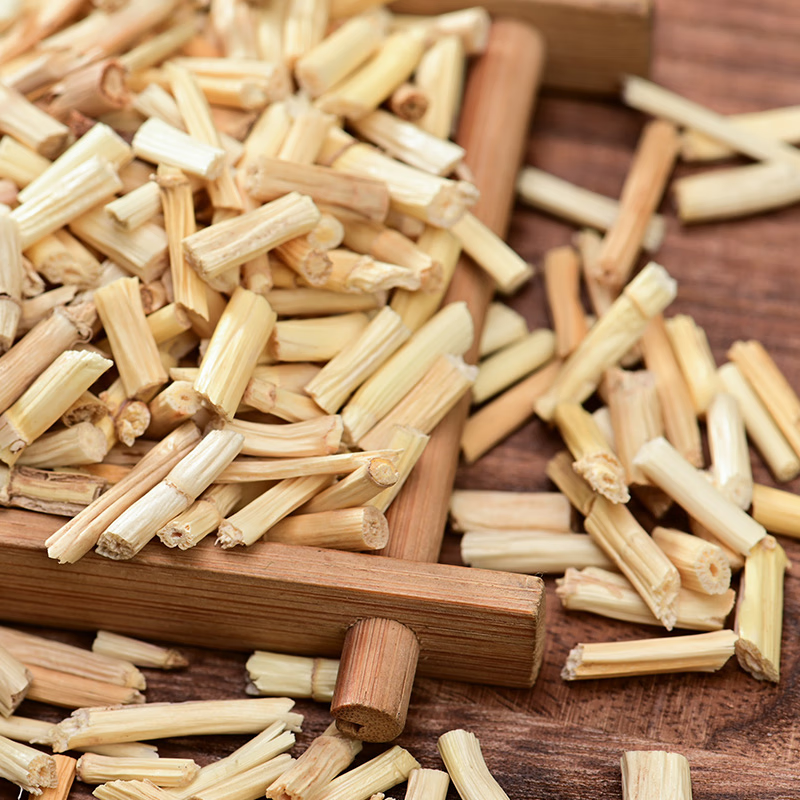




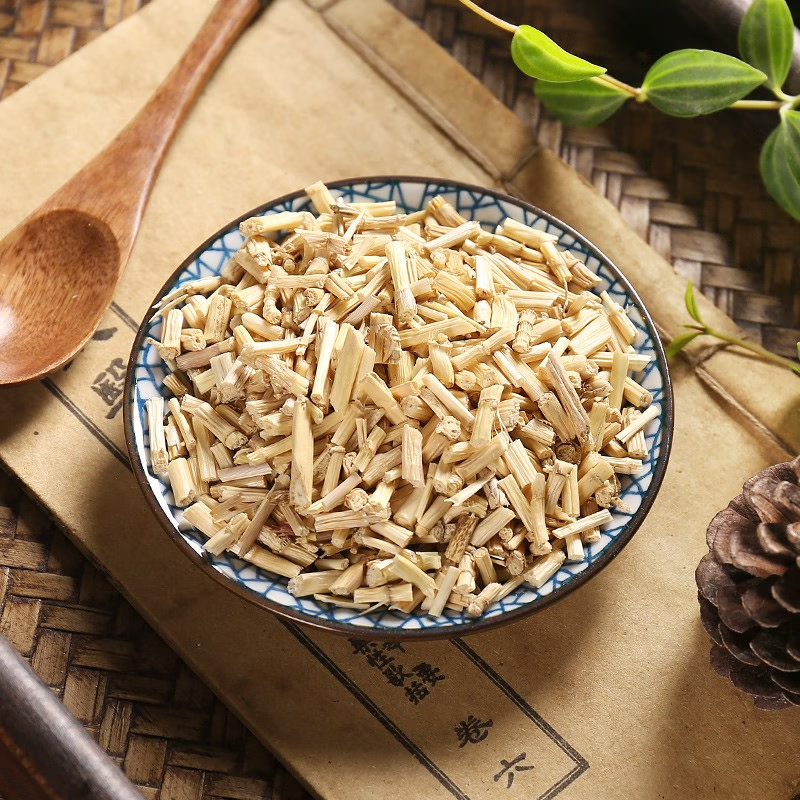







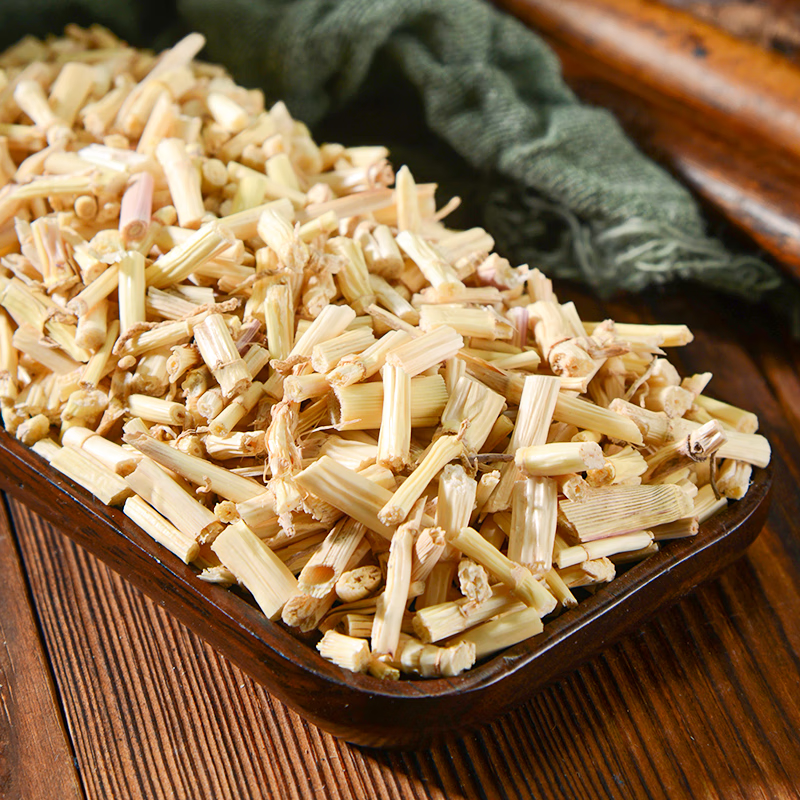
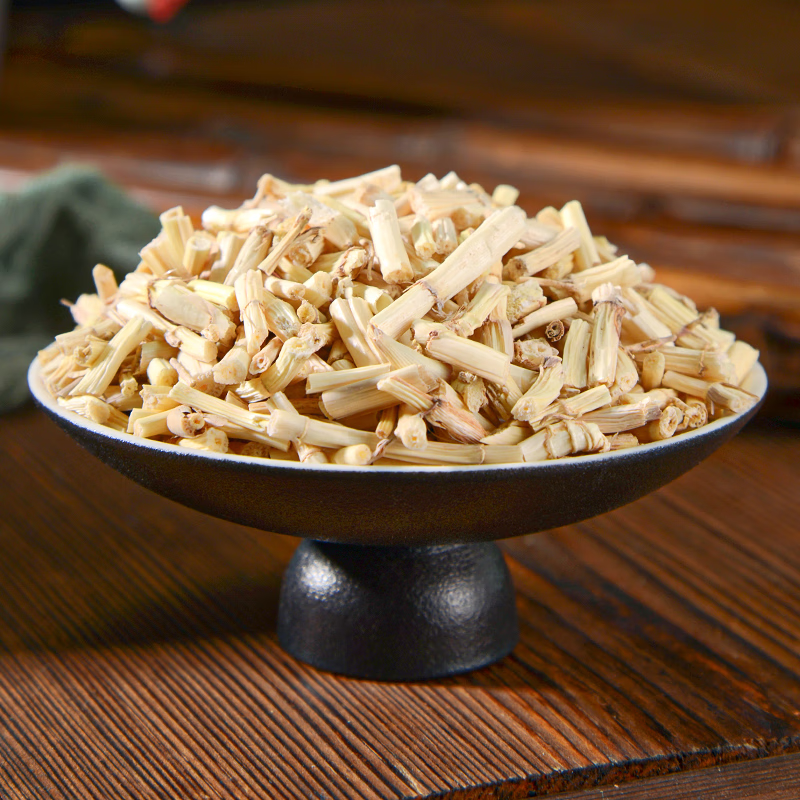


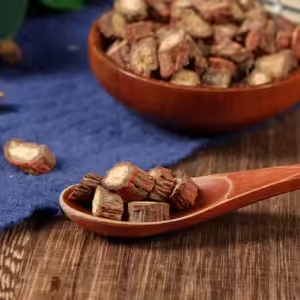
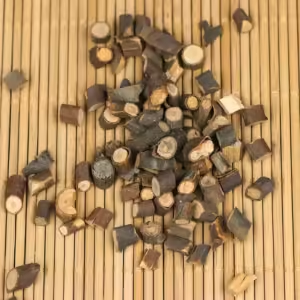
Commentaires
Il n'y a pas encore de critiques.